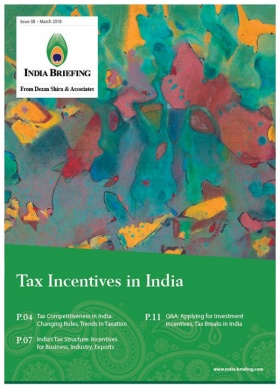Investing in India’s Entertainment Industry – Digital Streaming, Regional Content, Film and TV
Beyond the fabled song and dance sequences of its films, India’s entertainment business is rapidly diversifying and expanding across new industry segments.
Set to be worth US$20.6 billion by 2020, the industry is growing at a compound annual growth rate (CAGR) of 17.52 percent.
Unprecedented access to the internet and use of smartphones is creating new audiences across the South Asian subcontinent.
Within India, production companies are focusing on developing regional content to connect with the country’s hugely diverse local market.
At the same time, Indian content is beginning to find receptive markets around the world.
In this article, we outline key considerations when investing in India’s entertainment business while profiling major industry segments.
India’s entertainment industry is going digital
Indians consume much of their daily entertainment on mobile devices.
Smartphone penetration in India hit an estimated 33 percent in 2017.
While 33 percent may sound underwhelming in the context of smaller countries, remember that India has a population of 1.3 billion.
In 2017, India overtook the United States as the second largest smartphone market in the world.
According to a recent KPMG study, by 2021, over 800 million Indians will own mobile devices capable of streaming and downloading video.
The unprecedented availability of personal mobile devices, coupled with affordable data packages and strong connectivity in both urban and rural India has opened new opportunities in creating and delivering content to Indian audiences.
Recent studies estimate that the average Indian smartphone user spends between two and five hours on their mobile device daily.
Furthermore, urban India’s notoriously long work commutes on buses, trains, and subways guarantee a captive audience of millions at the beginning and end of each day.
To cater to an increasingly digital audience, businesses are investing more to produce mobile friendly content like short videos and games.
Digital content in India is uniquely able to sidestep the country’s strict censor board and convoluted distribution channels.
Much of this content is available for free online; however, many companies are slowly introducing paywalls.
Indian entertainment is in demand globally
Indian entertainment is a globally viable commodity, attracting key markets in every continent.
In April 2017, the Indian film star Aamir Khan arrived in China to promote his new film Dangal (English: Wrestler) where he was greeted by a sea of adoring Chinese fans who refer to the actor affectionately as ‘Uncle Aamir’.
Khan’s film went on to gross over US$196 million in Chinese box offices – almost triple of what the film made in India.
For many audiences in Asia and Africa, as well as the Indian diaspora throughout the Middle East, Europe, and North America, entertainment produced in India feels more relatable than its equivalent in Hollywood.
Indian TV shows are dubbed in numerous foreign languages and broadcast globally; in fact, Indian-made content can often make more money outside India than within the country.
Having realized this, companies have begun to internationalize their entertainment business models to capture wider audiences.
In 2017, the Indian entertainment company, Zee, opened a new office in Vancouver, Canada with the goal of producing English language content targeted at the diaspora communities across North America and Europe.
India’s regional content advantage
India has two official languages (English and Hindi) and 20 ‘regional’ languages. Each regional language has its own committed and unique audience.
As Paula McGlynn, director of Bharatiya Digital Productions, explained to India Briefing, “many regional languages have managed to sustain their own film industry, television industry, and theater industry within the limits of distribution and infrastructure available.”
In the digital sphere, however, “platforms such as YouTube and Facebook are already taking steps to encourage regional-language creators because they know that the English market in India has matured while markets for regional content are growing at triple the rate.”
Regional entertainment industries in India currently suffer from poor transparency and a lack of widespread professionalism.
But, well planned and quality content can bring in enormous returns.
Regional productions often operate at a fraction of the costs of their Hindi and English counterparts.
These productions have a dependable audience who appreciate entertainment made in their own language and using local cultural references.
The 2016 hit Marathi language film Sairat – a modern telling of Romeo and Juliet – was made at the standard budget of US$600,000. The film went on to gross US$16.8 million.
Film
India produces over 1,500 films a year. Despite the volume, box office totals in 2016 reached only US$2.1 billion.
In comparison, the combined box office sales in U.S. and Canada reached US$11 billion in 2016.
Low box office rates are largely a problem of reach and piracy.
There are only about 13,000 theater screens in India – about one screen per 100,000 people.
Moreover, only about 3,000 of these screens are multiplexes.
The rest are single-screen cinemas that charge nominal ticket fees.
However, multiplexes – especially luxury multiplexes – are slowly growing in tier two and tier three cities.
Production companies in India are increasingly looking to supplement their revenue by selling their post-release film rights to streaming companies.
There are over 20 subscription-based streaming sites active in India – they offer Indians an alternative to piracy by offering curated, high speed content.
Television
In 2017, India’s television industry grew from US$8.7 billion to US$9.7 billion – a growth rate of 11.2 percent.
India has roughly 286 million households. As of 2017, 183 million of these households owned a television.
In Europe and North America, many consumers would have first purchased home televisions and then individual smartphones, reflecting the market availability of both commodities.
Though mass produced televisions have been available for much longer than smartphones in India, factors such as income inequality and inconsistent access to electricity have prevented a similar trend.
A growing middle class and increasing urbanization is therefore still creating more first-time television buyers in India.
This means that while traditional television viewership is declining in many industrialized countries (in favor of streaming services), old fashioned TV channels are not in danger of extinction in India.
Rather, TV viewership rose by 21 percent in 2017 to approximately 780 million viewers. Growth in TV viewership is fueled by general entertainment channels (GEC) and regional language content, though news channels and sports broadcasting remain popular.
Gaming
The gaming industry in India was worth US$523 million in 2016 – with revenue coming in predominantly from smartphone-based games.
Video games requiring separate consoles or hardware have consistently failed to make a notable presence in the Indian market.
However, smartphone-friendly games are becoming increasingly popular.
As of 2016, India was the fifth biggest downloader of games on Google’s Play Store.
Games with an easy learning curve and low data usage enjoy widespread popularity across the country.
India’s gamers, however, are price sensitive and reluctant to pay for content.
In 2015, out of 150 million Indians who used mobile gaming apps, only 23 million were willing to pay for them.
As India’s gaming industry continues to grow, businesses will be looking at audience aggregation, advertising, and distribution as ways to monetize their content.
Live events
Indian cities are experiencing a renaissance moment in the growth and popularity of live events.
Rapid urbanization and higher levels of disposable income mean that middle class Indian consumers can afford a diverse set of entertainment options.
Yet, within the mushrooming urban cities, people feel increasingly alien with the wearing-down of traditional bonds and social networks.
This is more so as many Indians relocate across different states for jobs or better standards of living.
Urban Indian consumers seem to be overcoming this social vertigo by consuming more live, in-person entertainment.
Ticketing apps such as BookMyShow and Insider create a simple way to book and discover live events.
With enormous, diverse populations spread over geographically factious neighborhoods, these apps offer a single point to learn about and book live performances that urban residents may otherwise never hear about.
Importantly for foreign businesses, these apps formalize an otherwise unorganized and unruly industry, allowing an impressive level of transparency and accountability.
India’s live event industry is predicted to cross US$1.5 billion by the financial year 2020.
Animation and virtual effects
Foreign and domestic players alike are taking advantage of India’s information technology (IT) ecosystem to produce high quality, cost-effective animation and virtual effects (VFX).
The animation and VFX industry grew at a CAGR of 16.4 percent in 2016 to reach US$878 million.
Industry experts expect animation and VFX in India to reach US$1.9 billion by 2021.
Many recent award winning and high grossing animated feature films have been partially engineered in India; much of these digital back offices are concentrated in Bangalore, known as India’s ‘Silicon Valley.’
Indian audiences are highly receptive to entertainment with VFX. The 2017 hit Baahubali 2: The conclusion was the first domestic feature film to successfully use ample special effects. It grossed US$270 million, becoming one of the highest grossing Indian films in history.
As the global entertainment industry continues to digitalize, India is strategically placed to drive this growth as both a creator and consumer.
About Us
India Briefing is produced by Dezan Shira & Associates. The firm assists foreign investors throughout Asia and maintains offices in China, Hong Kong, Indonesia, Singapore, Vietnam, and Russia.
Please contact india@dezshira.com or visit our website at www.dezshira.com.
- Previous Article GST Reforms in the Works, Businesses in India Remain Hopeful
- Next Article Labor Laws, Costs, and Hiring Practices in India – New Issue of India Briefing Magazine Out Now











